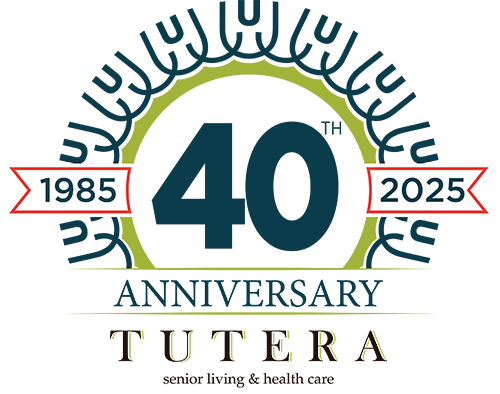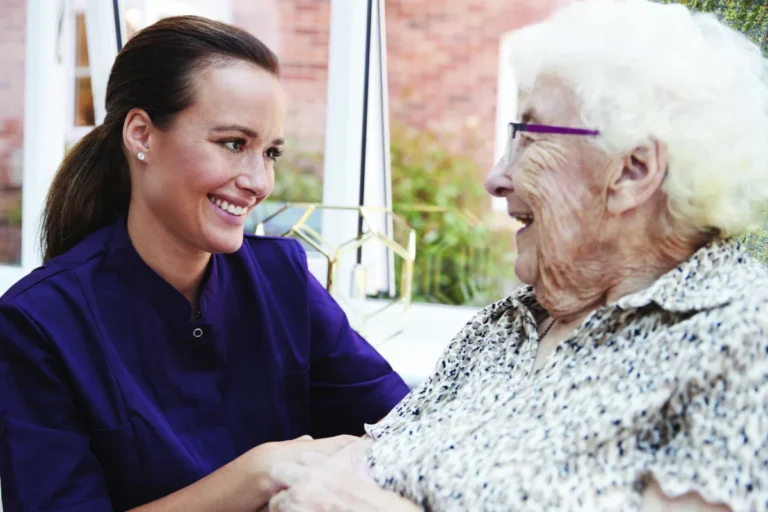Those seniors who live in an assisted living community may feel secure, receive plenty of assistance and have a positive outlook on their lives. With all the extra support they receive within their community, seniors and their families may feel so secure, they think a higher level of care may never be needed. But there will come a time when seniors need even more care services – such as those of skilled nursing community.
The transition to a nursing home may begin after a serious infection or if a senior is continually in and out of the hospital and needs more care than offered in an assisted living community. Skilled nursing offers extensive care and more stability to seniors who might otherwise spend extended periods of time in the hospital.
What Is the Difference Between Skilled Nursing and Assisted Living?
Assisted living provides supervision, support and personal care, but not 24/7 skilled care. These communities are designed for seniors who need extra help with the tasks of daily living. The residential settings have varied levels of services and housing configurations to address increasing care needs. Personal care and assistance with the activities of daily living (ADLs) often includes:
- Ambulation
- Bathing
- Dressing
- Eating
- Grooming
- Managing medication
- Toileting
- Transferring bed/chair
What is the Average Length of Stay in An Assisted Living Community?
The majority of these residents, 35% of them, will remain in assisted living for a year or longer, while 16% will stay for three years or more, according to a study by American Senior Communities.
Assisted living residents are provided an enhanced quality of life with daily activities, recreation, fitness opportunities and nutritious meals in home-like environments. Residents can enjoy a rewarding lifestyle with access to skilled nursing or rehabilitative care as they need it while family members feel peace of mind that their aging loved ones are in a safe space with the best care.
Residents can leave assisted living at any time, often giving one month’s notice. If you live on a campus where skilled nursing care is available, if a room is open in that part of the community, you could transition to that higher level of care.
What is a Skilled Nursing Community?
Terms such as skilled nursing facility, long-term care, nursing home and convalescent home are all names used to describe a residential facility that provides 24-hour medical care on site. “Skilled nursing” describes the type of service that is offered. The need for skilled nursing services does not instantly mean a senior requires placement in a separate community. Skilled services are available in a variety of senior care settings including in assisted living communities when home health care providers are enlisted to come in and provide additional services in their apartment.
24-Hour Support is The Highest Level of Care.
A distinguishing factor of a skilled nursing community is 24-hour care. This type of community provides the highest level of senior care possible outside of a hospital. The care must be provided by licensed health professionals like registered nurses, and physical, speech and occupational therapists.
The length of time the services are needed varies. According to Aging Care, “Services can be necessary over the short term for rehabilitation from an illness or injury, or they may be required over the long term for patients who need a high level of care on a frequent or constant basis due to a chronic medical condition.” Examples of skilled nursing care include everything from pulmonary, wound care and orthopedic injury care, to stroke and neurological conditions.
In order to be covered by Medicare, Medicaid, the VA or private health insurance, skilled nursing care provided in any setting for any amount of time must be ordered by a doctor.
Determining the Right Choice of Senior Care.
When a senior’s medical needs require full-time nursing care or access to services that are more hospital-like than those found in assisted living, a skilled nursing community may be the right choice. Many seniors move to a skilled nursing setting following a hospital stay. Another determining factor to moving to a higher level of care is mobility. Those seniors who are non-weight bearing and require assistance of two staff members for transfers cannot be accommodated in assisted living.
When a resident becomes a danger to themselves or to others is also a reason to move to skilled nursing care. Families may find they regret not moving a loved one into skilled nursing care sooner where there is 24/7 attention, especially if the senior begins falling or is hospitalized regularly.
How Do Costs Vary Between Assisted and Skilled Nursing Communities?
Assisted living communities are private pay. Medicare and Medicaid generally do not cover the costs, which be up to $4,300 per month, depending on what state you live in according to studies by Genworth.
Medicare or Medicaid may cover the cost of skilled nursing communities if patients meet the requirements. Semi-private rooms for skilled nursing care are on average $7,756 per month while private skilled nursing rooms can be $8,821 on average.
At Tutera, we believe in transparency and being upfront with families and seniors about the level of care required and the limitations. We’re skilled at assessing a senior’s health care needs and determining the best accommodations for them. Call us at 877-988-8372 for a no-obligation personal consultation at your convenience. You’ll also discover more location information here.







